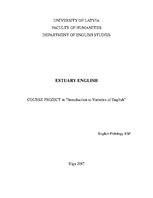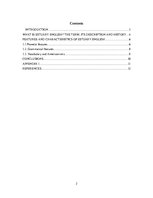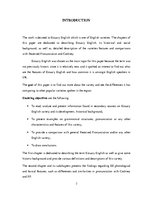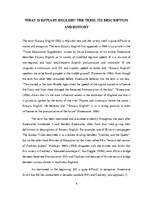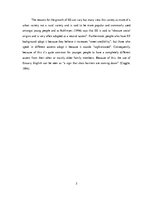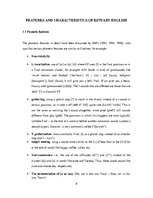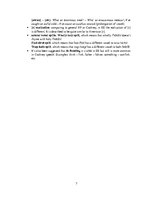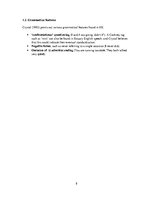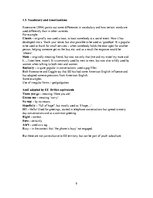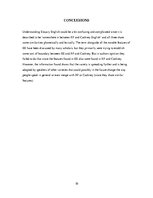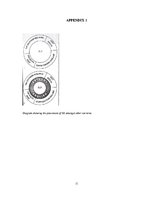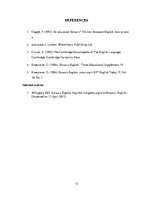-
Estuary English
| Nr. | Sadaļas nosaukums | Lpp. |
| INTRODUCTION | 3 | |
| WHAT IS ESTUARY ENGLISH? THE TERM, ITS DESCRIPTION AND HISTORY | 4 | |
| FEATURES AND CHARACTERISTICS OF ESTUARY ENGLISH | 6 | |
| 1.1. | Phonetic features | 6 |
| 1.2. | Grammatical features | 8 |
| 1.3. | Vocabulary and Americanisms | 9 |
| CONCLUSIONS | 10 | |
| APPENDIX 1 | 11 | |
| REFERENCES | 12 |
CONCLUSIONS
Understanding Estuary English could be a bit confusing and complicated since it is described to be ‘somewhere in between RP and Cockney English’ and all three share some similarities phonetically and lexically. The term alongside all the notable features of EE have been discussed by many scholars, but they primarily were trying to establish some sort of boundary between EE and RP and Cockney. But in authors opinion they failed to do that since the features found in EE also were found in RP and Cockney. However, the information found shows that the variety is spreading further and is being adopted by speakers of other varieties that could possibly in the future change the way people speak in general or even merge with RP or Cockney (since they share similar features).
…
Course paper done in “Introduction to Varieties of English” course at university. The work is devoted to Estuary English which is one of English varieties. The chapters of this paper are dedicated to describing Estuary English, its historical and social background, as well as, detailed description of the varieties features and comparisons with Received Pronunciation and Cockney. The first chapter is dedicated to describing the term Estuary English as well as give some historic background and provide various definitions and descriptions of this variety. The second chapter and its subchapters presents the findings regarding EE phonological and lexical features, such as differences and similarities in pronunciation with Cockney and RP.

